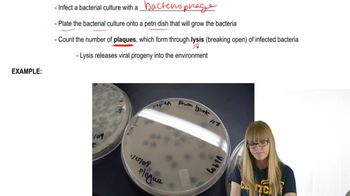Here are the essential concepts you must grasp in order to answer the question correctly.
Promoter Sequence
The promoter sequence is a region of DNA located upstream of a gene that initiates transcription. It contains specific binding sites for transcription factors and RNA polymerase, which are essential for the regulation of gene expression. Understanding the promoter's role is crucial for interpreting how genes are activated or repressed in response to various signals.
Recommended video:
Band Shift Assay
A band shift assay, also known as an electrophoretic mobility shift assay (EMSA), is a technique used to study protein-DNA interactions. In this assay, DNA fragments bound to proteins migrate more slowly through a gel than unbound DNA, resulting in distinct bands. This method helps identify specific proteins that interact with DNA sequences, such as transcription factors.
Recommended video:
TFIIB
TFIIB is a general transcription factor that plays a critical role in the initiation of transcription by RNA polymerase II. It helps recruit RNA polymerase to the promoter and is involved in the formation of the transcription pre-initiation complex. Understanding TFIIB's function is essential for analyzing how transcription is regulated and how specific genes are expressed.






